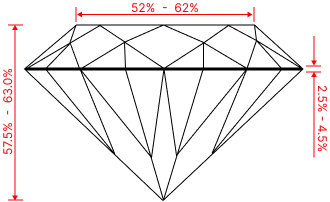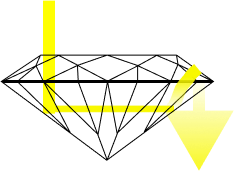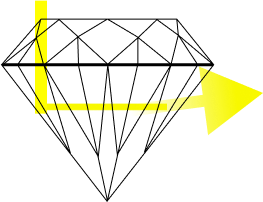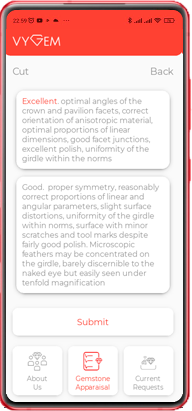Assessing the Cut of Gemstones
The cut of a gemstone is a critical factor that greatly influences its brilliance, fire, and overall beauty. A well-cut gem will maximize light return, enhancing its visual appeal. When evaluating the cut of a gem, pay close attention to the following:
Key Aspects of Gem Cut Evaluation
- Facet Alignment: Examine the precision with which the facets meet, especially at the culet (the point at the bottom of the gem). Ensure there is no culet facet (flat point at the bottom instead of a point), which is sometimes done to save weight but detracts from brilliance. A sharp, well-defined point is ideal, unless a specific type of cut requires a different configuration.
- Symmetry: For round brilliant cuts, when viewed from above, you should see Two squares of equal size, sharing a common center, with one rotated 90 degrees relative to the other. When inspecting other shapes, look for consistent symmetry throughout the gemstone.
- Girdle: The girdle, the narrow band around the circumference of the gem, should be neither too thin nor too thick. An overly thin girdle can make the stone prone to chipping, while an overly thick girdle adds unnecessary weight without enhancing the appearance.
- Visual Size and Cut Proportions: A deeper cut will make a gem appear smaller face-up, while a shallower cut will make it seem larger for the same carat weight. Optimal cut proportions are crucial for maximising brilliance and perceived size.
- Windowing: A "window" is when you look at the center of the gem and see a hollow area, rather than light reflecting back from within. This occurs when light passes straight through the gem instead of being reflected back to the eye. A well-cut gem should not have a visible window, ensuring maximum brilliance and light return.
- Chips and Damage: Look for any chips, especially those that reach the surface (especially on the face-up side of the gem). Surface-reaching chips can dramatically decrease a gem's value and durability.
- Ideal Height Proportions: The height of the gem should ideally be approximately 70% of its diameter or width. These proportions are generally considered ideal for optimum light performance.

Ideal cut. In this type of faceting, light entering the gemstone is internally reflected by the pavilion facets and exits through the crown. The result is a brilliant, ‘live’ gemstone.
Examples:
The effect of proper proportions on light movement: a comparison between a well-cut gemstone and stones with either inadequate or excessive depth (height).



It’s important to examine both the proportions and the craftsmanship of the cut to fully understand its impact on the overall appearance of the gem. Many rare and precious gems are often cut poorly in an attempt to retain as much weight as possible. This can diminish the gem's brilliance and perfection, which often compromises the inherent beauty of the gemstone in favor of maximizing the price per carat.
The Sad Reality
It's disheartening when gems are sacrificed for weight retention, reducing their beauty and optimal light performance. We believe that an excellent cut enhances a gem's inherent beauty and value, far more than weight alone. We always advise to choose quality over weight.
Proper assessment of a gem's cut helps to determine a fair price per carat and also ensures that the inherent potential of the gemstone is realised. Ignoring the quality of cut when evaluating clarity gems can significantly diminish a gem's overall appeal and value.

